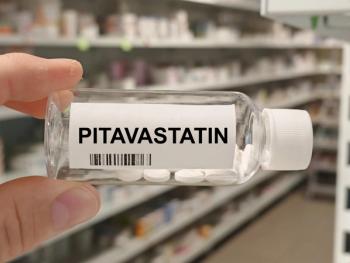
- Fall 2023
- Volume 17
- Issue 2
Pharmacoequity Comes to the Center of Care Delivery for Underserved Patients
Despite the economic and structural support, rural, poor, and underserved communities still have wide disparities in health outcomes.
What is Pharmacoequity?
Health disparities have long existed in the United States. Yet, until the advent of tracking data, there was little attention on the differences in these outcomes, including maternal fatality rates or access-to-care data in rural, poor, and underserved areas (called pharmacy deserts). Historically, policy makers have attempted to address health inequity on 2 fronts: (1) providing coverage or insurance, principally Medicaid and the Children’s Health Insurance Program; and (2) providing subsidization or special billing privileges to care providers through structural vehicles like Federally Qualified Health Centers, Rural Health Clinics, Disproportionate Share Hospital payments, and loan repayment for medical providers in underserved areas.
Disparities in Care Delivery Comes to the Forefront
However, despite the economic and structural support, rural, poor, and underserved communities still have wide disparities in health outcomes, even when statistically adjusting for factors such as weight and health literacy. In fact, gaps in care delivery remain, pointing to differences in care and patient response in underserved communities.
Professors have started to teach about health disparities and how to address them with more emphasis in the past decade. Data have driven awareness and response to feedback, helping providers see the results of their patient encounters. Additional instruction on non-care factors can drive care gaps and outcomes, including low health literacy, food insecurity, and transportation, and have become more widely accepted as part of the care continuum, responsibilities, and scope of care. Investigators have consistently observed that a patient’s overall life expectancy and health are strongly associated with the zip code they live in compared with their genetics. One landmark study published in the New England Journal of Medicine (NEJM) suggests that 60% of a patient’s health care outcomes are determined by their behavioral, social, and economic factors, with care delivery being only 10% and genetics being 30%.1
Of course, genetics plays a role in behavior, but follow-up studies about zip code and census tracking provide compelling data that substantiate the idea that where an individual lives is highly predictive of their health outcomes. Although some observational studies confirm the NEJM study, another interesting study used data about twins, attempting to deemphasize genetics and tracked patient outcomes. It found that socioeconomic factors do play a role but environmental and genetic factors are even stronger.2,3 Regardless, certain areas of the country with the highest rates of poor outcomes are the same areas with the least amount of access to care, food, transportation, and health literacy. We can recognize a need to better serve these communities.
What Does This Mean for Pharmacy?
Pharmacoequity is a relatively new term that has come to mean equitable access to drug therapies. Notably, even the best access to therapies still does not necessarily mean we are resolving poor outcomes due to suboptimal care delivery. Having the appropriate regimen, correct handling, and better adherence are tougher, but it is important to consider these when viewing pharmacoequity through the lens of a whole individual and the provider’s spectrum of care. There is no doubt that young pharmacists will receive the baton from the prior generation with more awareness of disparities in access to drug therapies and care delivery, and more tools to provide patient-centered and culturally competent structures for the communities with common barriers and needs.
About the Author
Troy Trygstad, PharmD, PhD, MBA, is the executive director of CPESN USA, a clinically integrated network of more than 3500 participating pharmacies. He received his PharmD and MBA degrees from Drake University and a PhD in pharmaceutical policy and outcomes from the University of North Carolina. He has recently served on the board of directors for the Pharmacy Quality Alliance and the American Pharmacists Association Foundation.
References
- Schroeder SA. We can do better--improving the health of the American people. N Engl J Med. 2007;357(12):1221-1228. doi:10.1056/NEJMsa073350
- Pesheva E. Zip code or genetic code? Harvard Medical School. January 14, 2019. Accessed September 25, 2023. https://hms.harvard.edu/news/zip-code-or-genetic-code
- Lakhani CM, Tierney BT, Manrai AK, Yang J, Visscher PM, Patel CJ. Repurposing large health insurance claims data to estimate genetic and environmental contributions in 560 phenotypes. Nat Genet. 2019;51(2):327-334. doi:10.1038/s41588-018-0313-7
Articles in this issue
about 2 years ago
Physical Activity Positively Impacts Symptoms of Depression, Anxietyabout 2 years ago
Eight Steps for Success: How to Start Medical Writing as a Studentabout 2 years ago
Understanding Pharmacogenomics Is Essential for Personalized Careabout 2 years ago
The Evolving Role of the Pharmacist in Opioid Use Disorderabout 2 years ago
Parenting and Pharmacy Residency: 4 Tips and Tricks for Successabout 2 years ago
Pharmacy Residency Is Not the End-All-Be-All for Pharmacy StudentsNewsletter
Stay informed on drug updates, treatment guidelines, and pharmacy practice trends—subscribe to Pharmacy Times for weekly clinical insights.














































































































































































































